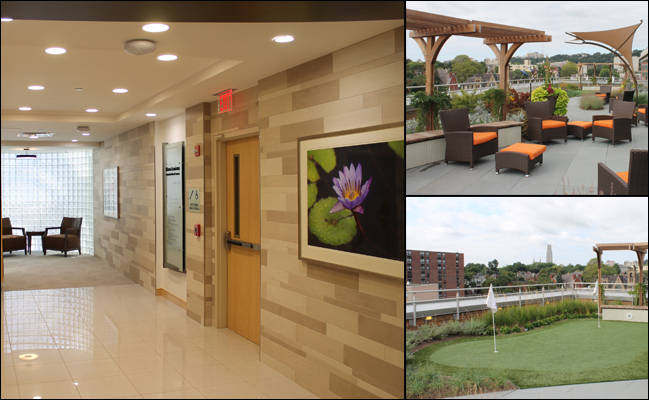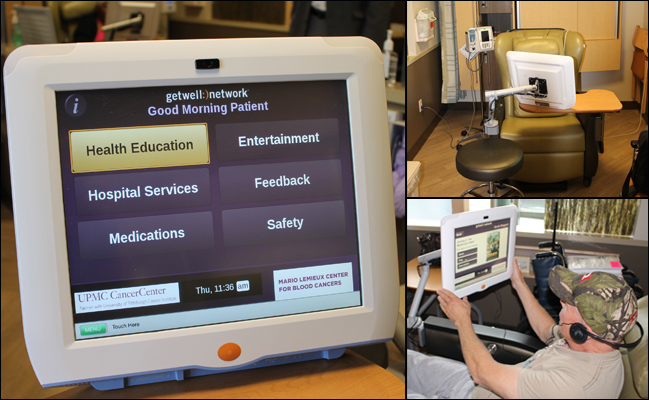The Power Of Patient-Centered Technology
It’s become a staple for athenahealth CEO Jonathan Bush to poke fun at the grandeur of select hospital lobbies throughout the course of his infamous keynote speeches. No doubt, much of the opulence displayed at some healthcare facilities does little more than serve as a status symbol for the provider. The money dedicated to these architectural wonders would often better serve the patient population if it was reallocated for physician recruitment, enhanced treatment options, or to lower the cost of care. However, in some instances, luxurious surroundings serve a higher purpose. Sometimes, they are created specifically with the patient in mind.
This is what struck me when I visited the Mario Lemieux Center for Blood Cancers (part of UPMC’s Hillman Cancer Center) last week. This facility, dedicated to providing outpatient treatment for leukemia, lymphoma, and other types of blood cancers, is a case study in lavishness. There are marble facades and decorative fountains. There are video picture windows that display breathtaking nature landscapes. There’s even a rooftop garden, complete with a putting green, that overlooks the city of Pittsburgh. At first glance, these features seem like a foolish use of money for a cancer treatment facility. But, upon closer inspection, you come to realize just how patient-centered these investments are.

A look at the entry hall at the Mario Lemieux Center for Blood Cancers as well as the Rooftop Garden and putting green.
“Cancer is a frightening, life-changing disease,” says Roxann Esoldo, unit director of the Mario Lemieux Center for Blood Cancers. “Our goal in developing this Center was to help put patients at ease. To provide them with a comfortable, spa-like environment where they aren’t forced to focus solely on their chemotherapy, but that offer several means for them to relax and escape. We wanted to make the Center as non-clinical as possible, and change expectations for what cancer treatment means.”
Having had friends and relatives that have battled cancer, I had seen a cancer center or two prior to my visit to UPMC. Most are very similar to what is depicted in the television show Breaking Bad — large, communal rooms with recliners, magazines, and a single television set where patients like Walter White receive their chemotherapy treatments.
The facilities at the Mario Lemieux Center for Blood Cancers completely deviate from this cold and depressing standard. Each treatment station at the Center is semi-private, and each comes equipped with its very own interactive patient display from GetWellNetwork. This display is much more than a bedside TV, it also provides each patient with Internet access, a complete movie library, gaming options, and an array of patient education features.
The investment in the GetWellNetwork Interactive Patient Care System technology was the first of its kind throughout the UPMC health network, and was a key consideration when constructing the Mario Lemieux Center for Blood Cancers. Depending on the severity of their condition, a cancer patient may have to remain at the center for several hours (sometimes as many as 8-12 hours on a given day) to receive their chemotherapy treatment. That’s a long time to sit in a chair leafing through magazines or staring at a shared television screen. The GetWellNetwork displays provide patients with their own individualized entertainment options, and the patients at the Mario Lemieux Center for Blood Cancers appreciate the diversion.
“I have to sit in this chair for more than 9 hours every 21 days for each course of chemotherapy,” says Raymond Hillenbrand, patient at the Mario Lemieux Center for Blood Cancers. “It’s a very stressful experience. The GetWellNetwork displays give me something to look forward to when I come to the Center. I don’t have to bring my iPod or a book. I can watch movies or access the Internet from the display. It really helps pass the time and takes my mind off of what I’m going through.”

A GetWellNetwork interactive patient display is installed at each semi-private chemotherapy treatment station at the Mario Lemieux Center for Blood Cancers. UPMC patient Raymond Hillenbrand shows us how it works.
The GetWellNetwork Interactive Patient Care technology hasn’t just improved the patient experience at the Mario Lemieux Center for Blood Cancers. It has also helped improve patient education and overall care. As mentioned, each display offers more than just a series of entertainment options. They also provide a vehicle in which to deliver important information about each patient’s disease, treatment, medications, and possible side effects. Discharge and follow-up instructions are also conveniently delivered through the GetWellNetwork platform.
“I never read the paper discharge instructions I receive at other healthcare facilities,” says Hillenbrand. “Plus, it’s often difficult to completely understand or retain much of what a nurse tells you when discharge instructions are delivered verbally. However, I find the combination of video and text the GetWellNetwork platform provides ideal for delivering discharge information. The tool instructs me to review all discharge information, confirms that I understand it, and prompts me to interact with the clinicians at hand. I now have a clearer understanding of what to expect, and what my responsibilities as a patient are, upon discharge.”
